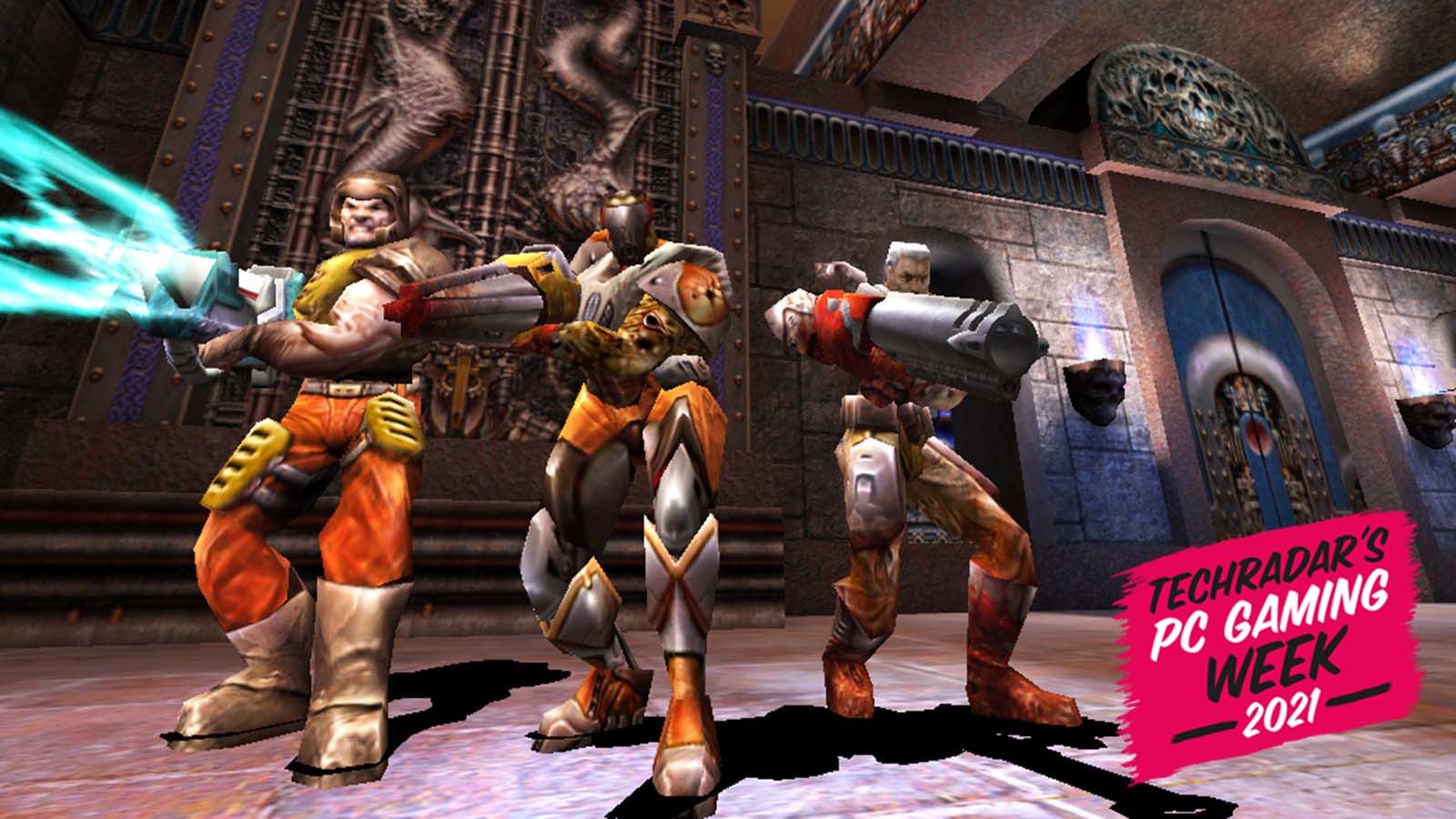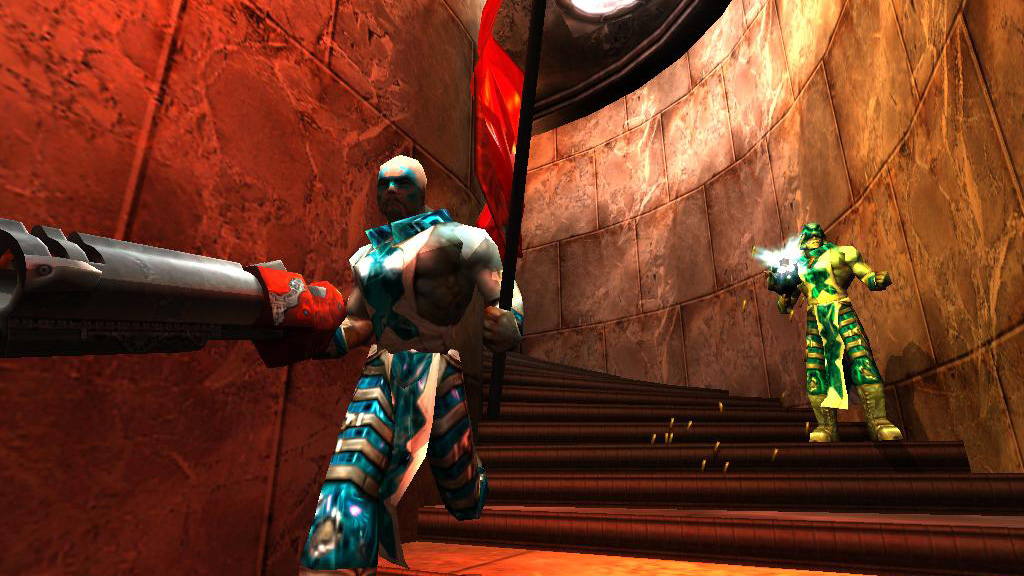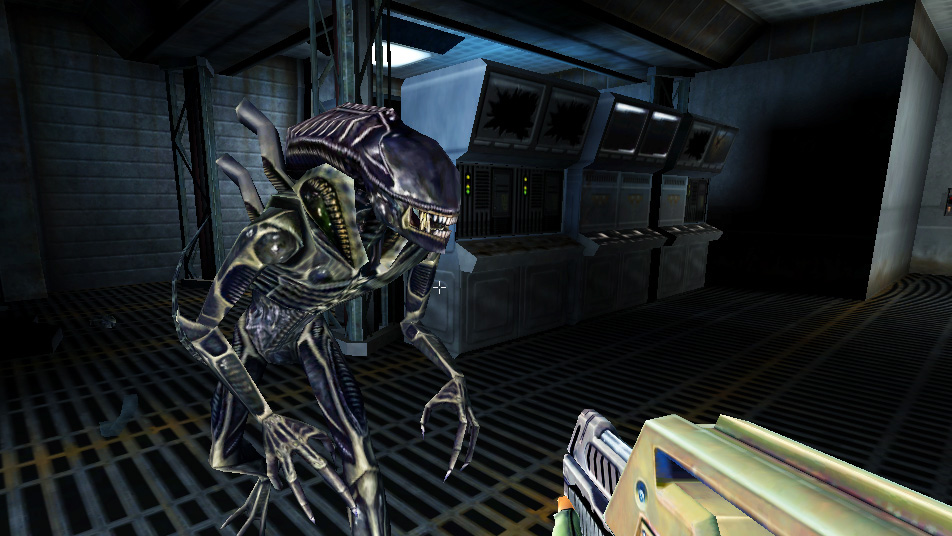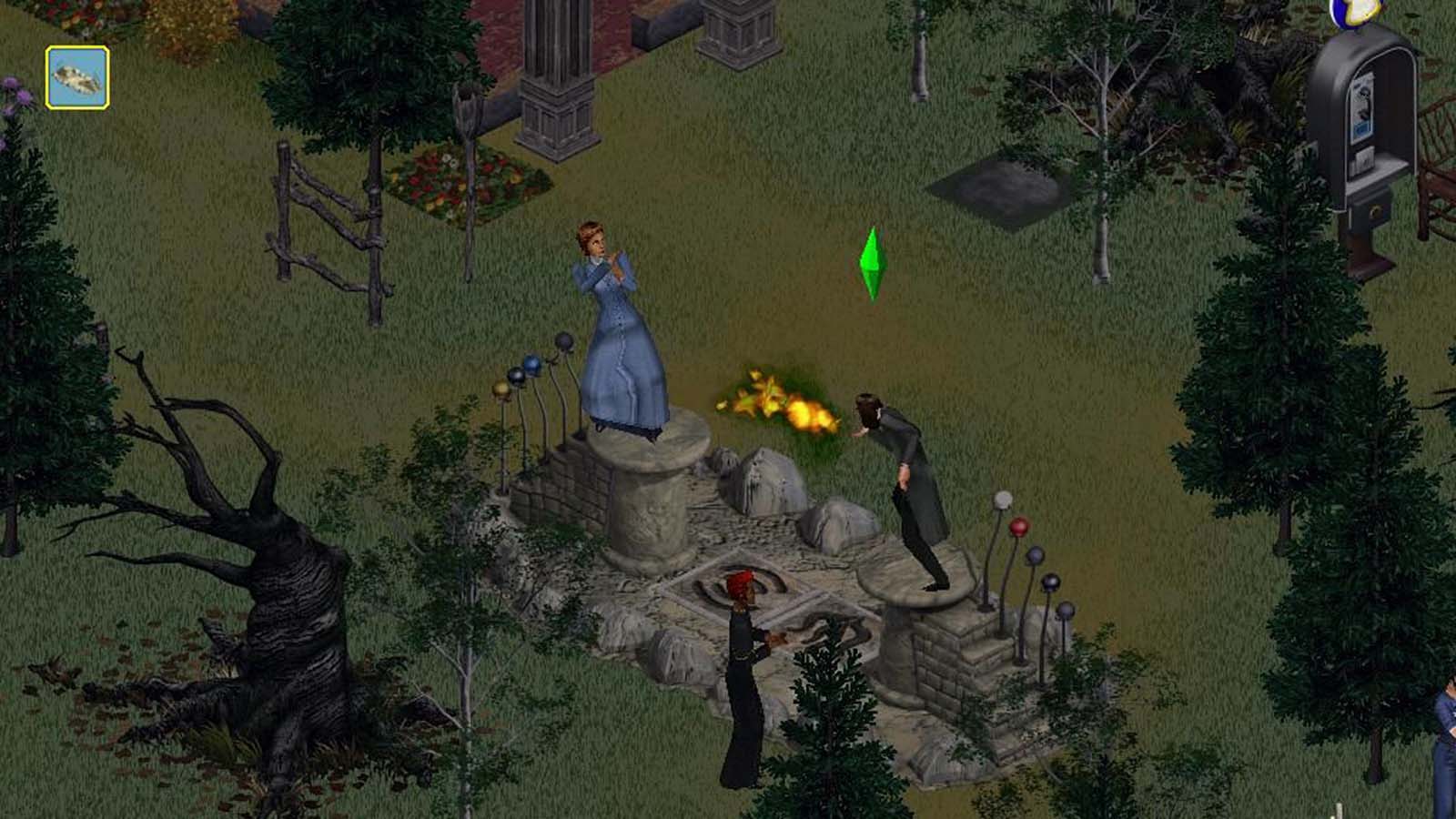Playing through the early 2000s with a Voodoo GPU
Limited options, lots of tinkering.

It’s hard to pinpoint exactly when I started to assiduously use my PC as a gaming platform. I think it happened around the turn of the century, when I got into gaming magazines and many doors opened.
For some reason, I wasn’t crazy about video games during my childhood years; I had a PS1 and often toyed with other consoles when I visited my friends and cousins, but my parents weren’t pestered by “please, buy me the latest hardware” demands.
Since I was born in 1992, I made do with what I could access. My disregard for the latest, trendiest games also meant my gaming diet was kind of unorthodox and lacked many “generation-defining” titles, such as Final Fantasy VII or Metal Gear Solid. I wasn’t a big Nintendo fan either. I simply got closer to PlayStation and PC by chance.
Despite my parents’ obliviousness to PC hardware, the second PC we had was quite beefy and served me well. It was also the PC that got me into PC gaming through the first half of the 2000s.
I cannot remember all the specifics, but it was packing a Pentium III, enough RAM to handle most games at the time, and an amazing Voodoo3 3000 GPU with a whopping 16 MB of memory.
That rig was perfectly fine for the late 90s and early '00s, but I had to stick with it until 2007 when games were starting to require 256 MB of VRAM or greater, so I ended up lagging behind and understandably spent more time with consoles until I got a new setup.
Alright, Hero. It’s time for some Pain

The first PC game that really grabbed me was Quake II, but there was no way I was going to be able to run it on our family PC. It wasn't until the third game arrived in 1999 that I got my change. Magazines were raving about Quake III: Arena; it was a huge graphical jump for the saga, and the online tech it was packing set a gold standard for every shooter that came after it.
Sign up for breaking news, reviews, opinion, top tech deals, and more.
Back then, I had no idea about system requirements or graphical settings, and I learned about tech-y things on the go on my own, so installing games was just a matter of praying to the elder gods for a positive result – the executable not closing itself as soon as it opened.
Quake III was merciful though, as its recommended requirements asked for a Pentium III, 64 MB of RAM, and 16 MB of video memory – my PC ran it comfortably at 800x600. Afternoons were endless in The Longest Yard 24/7 servers, and filling my Q3 folders with custom characters and maps quickly became a hobby. Rei Ayanami railgunning Darth Vader? That was the good stuff.
You are mutating…

If you’re wondering about more famous shooters, like Half-Life and Counter-Strike, I slept on them for too long. I tried my luck with Counter-Strike 1.6 around 2005 though; it didn’t run on my PC, and I ended up installing it on my mother’s laptop, which had a Pentium 4 and 64 MB of video memory.
Nonetheless, most of my time with Counter-Strike was spent in a gaming-oriented cybercafe that me and my friends raided on the weekends. Only God knows how much pocket money we spent there.
Big film franchises have always been a big part of my life, too, and that includes their respective video games. In the case of Aliens vs. Predator, Paul W.S. Anderson’s film hadn’t happened yet, but comic books and some older game adaptations already existed.
I completely missed Rebellion’s first game in 1999, but the sequel, which was developed by Monolith and released in 2001, was 100% my jam during my early teenage years. It also ran surprisingly well on my PC even though I was just above the minimum settings – 32 MB GPUs were quickly becoming the new standard for higher settings.
The asymmetrical FPS gameplay was unlike anything I had played before, and each species had different classes/roles that catered to different playstyles. I was absorbed by the multiplayer component for the longest time.
Aliens vs. Predator 2 was my first foray into competitive gaming; while it wasn’t a mainstream shooter, the game thrived and developed a healthy community of clans. I met some really nice folks from all over the world thanks to this game, and as a native of Spain, it played a huge role in developing my English language skills.
Real time strategy games made me a convert
RTS games were also key to my early development as a PC gamer. The genre was anything but accessible in the 90s, and I vividly remember tumbling my way through Chaos Island: The Lost World, a Jurassic Park title, in 1998.
That wasn’t a good first impression, and I didn’t go back to strategy games until Age of Empires II, which was – and still is – a must-play. Even a toaster could run that one, and its UI was a marked improvement over other titles’ interfaces. I started playing it around 2002, but another RTS soon cemented itself in my mind soon after: Warcraft III.
Blizzard’s return to the world of Azeroth blew everyone away. It was the second most-played game in our favorite cybercafe, and (thankfully) ran well enough on my home PC. For a 2002 release, the system requirements were very reasonable, and only the recommended 32 MB GPU was above what I packed – too many frost wyrms or tanks in the later stages of a match and my poor Voodoo3 started to cough.
Warcraft III also opened my eyes to RPGs; I hadn’t played Diablo II, but some of it bled into Blizzard’s first 3D RTS – heroes were unique units that could level up and obtain objects and equipment. I dug this system, and the first DOTA iteration, which was born as a Warcraft III map, would only make me more interested in RPG mechanics. I spent most of my time playing regular matches with bots though.
Shortly afterwards, a high school friend who was really into RPG and RTS games told me about Age of Mythology, which marked the franchise’s jump to 3D graphics. This entry took hold of me with more strength than the second Age of Empires; the mix of the classic real-time strategy formula with various mythologies was hard to resist, plus the soundtrack is a loop of bangers, making it easily Ensemble Studios’ best-sounding game. Sadly, I never figured out the online portion of the game – it required fiddling with ports and IP addresses, things I didn’t bother with back then.
[Editor's note: the US state of California has recently filed a lawsuit against Blizzard Activision, making serious allegations of workplace harassment. You can read the latest developments in that lawsuit here.]
Satisfying other needs

Gaming on a PC during the 90s and 00s without touching a simulation game was literally impossible. They were everywhere, as they took great advantage of personal computers’ horsepower. Of course, “simulation game” is a very broad description, as those games have gone in wildly different directions and borrowed from many genres over the years.
Nowadays, most people may describe The Sims 4 as a strategy title, and they’re not wrong. Still, that franchise deals with simulation, and the first one took the world by storm by offering something previously unseen: taking control over a digital character’s daily life. It sounded like most boring video game pitch ever on paper, but everyone became addicted to it. I joined the party a bit later than 2000, but I got there.
The first Sims wasn’t a very demanding game. I remember the load times were a bit rough, but you could spend non-stop hours glued to the screen afterwards, so those longer-than-usual wait times were totally worth it. While I’ve gone back to The Sims 2 and 3 over the years, The Sims 1 and its amazing expansion packs remain in my memories of the first half of the 2000s, and will probably stay that way. Nostalgia often leads to disappointment, and I’d like to avoid that one.
Another series of simulation games that found great success was Zoo Tycoon, Microsoft’s answer to RollerCoaster Tycoon. This franchise has kind of survived through the years with sequels, a smaller reboot for Xbox One, and a failed spinoff titled Zoo Tycoon Friends that released in 2014.
None of them have come close to the original’s charm. It has aged beautifully thanks to its 2.5D sprites and locked isometric view, which have allowed it to adapt extremely well to higher resolutions without stability problems. Its expansion packs, Dinosaur Digs and Marine Mania, were also nuts and added completely new systems to the game. I especially enjoyed the latter, and going crazy with the width and height of the water enclosures never got old.
The games that had to wait
Don’t get me wrong, I firmly believe there’s never been a better time to be into video games, yet I doubt we’ll remember this age as fondly as those that came before. Of course, nostalgia is doing a bit of the talking here, but there was something inherently comforting about games being simple and magical spaces that weren’t changing with every passing week.
As the midpoint of the decade approached, my PC was understandably left behind. Games became too big, graphics too complex, and the digital machinery under their surface too demanding. I did play titles such as Grand Theft Auto: Vice City or WH40K: Dawn of War on my mother’s laptop, but my gaming rig was quickly becoming a dinosaur.
I also received a PS2 soon after it was launched, so I drifted more towards that for a while. But I couldn’t help but feel envious when my pals showed me the latest Star Wars Battlefront mods on PC. I was having a blast with that game (and later its sequel) on PS2, but everything was bigger in the PC version.
When I finally got a new build in 2007, I installed that game as soon as possible and loaded it with mods. Then I discovered The Elder Scrolls IV: Oblivion and you can imagine how that went.
MMORPGs also became huge during those years, and World of Warcraft dominated the gaming landscape by the end of 2004. I missed that joyful celebration too and spent too much time looking for something similar that ran on my crusty hardware. This wasn’t a matter of money; I simply didn’t contemplate asking my parents for a computer upgrade that wasn’t obligatory. That changed a couple of years later, and with my own money, but I can’t help but feel I missed out on some good fun.
It’s wild to look back at all this and think about how different gaming was back then. Indie titles were almost non-existent, same thing with free-to-play alternatives, and digital storefronts didn’t kick off until Valve launched Steam and everything that came with it.
The lines between genres weren’t as blurred either. Products were clearly defined (and more expensive), and we spent countless hours with the same games for years. These days, we tend to get distracted too often, and our backlogs know no end. It’s hard to keep track of and keep up with everything that releases.
Don’t get me wrong, I firmly believe there’s never been a better time to be into video games, yet I doubt we’ll remember this age as fondly as those that came before. Of course, nostalgia is doing a bit of the talking here, but there was something inherently comforting about games being simple and magical spaces that weren’t changing with every passing week. How much bigger can they get before they overwhelm us?
- Welcome to TechRadar’s PC Gaming Week 2021, our celebration of the greatest gaming platform on Earth. Despite the global pandemic and ongoing GPU shortages, PC gaming has never been more vibrant and exciting, and throughout the week we’ll be reflecting this with a selection of in-depth articles, interviews and essential buying guides.